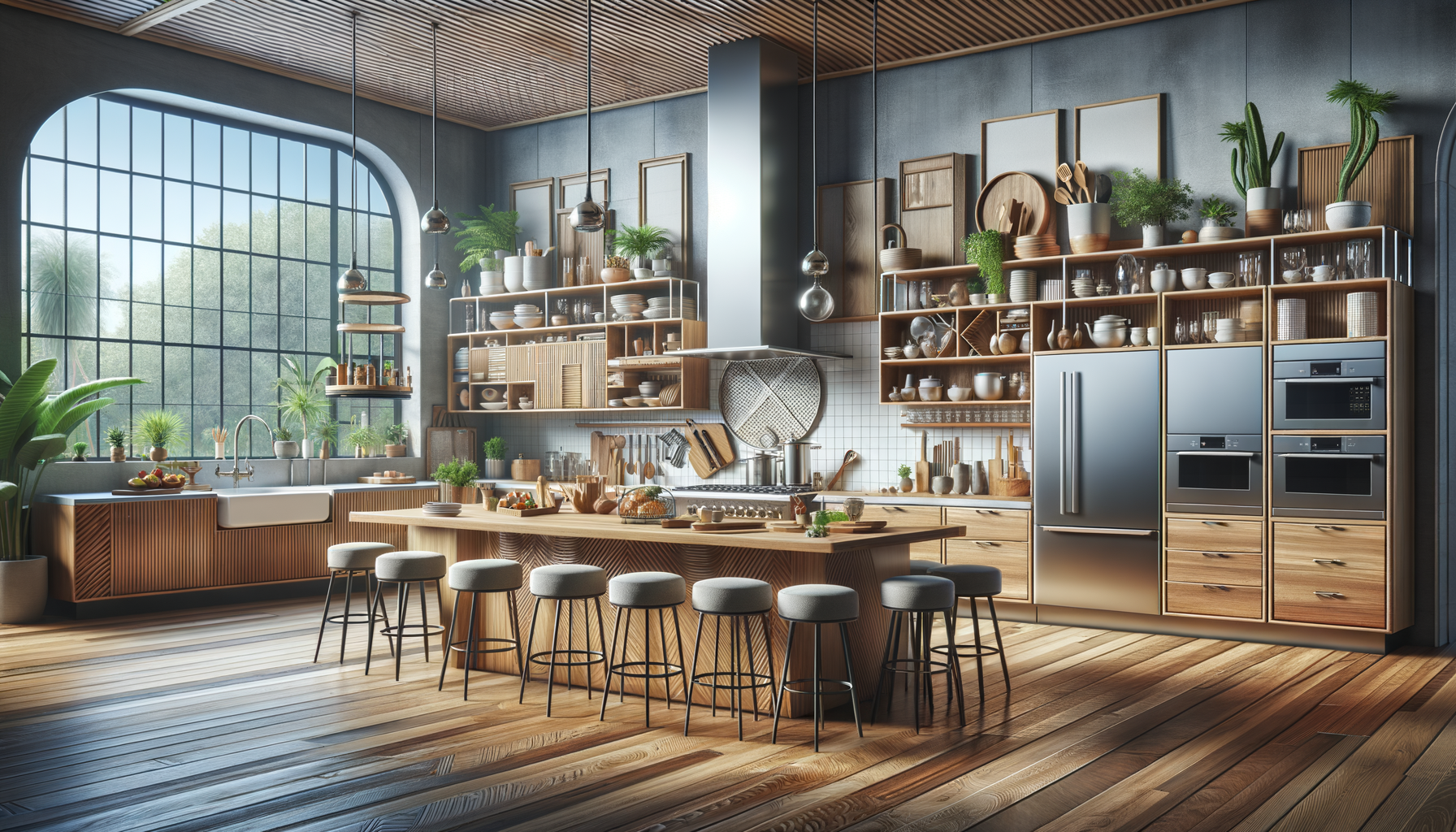Exploring the World of Kitchen Furniture: Style, Function, and Innovation
Kitchen furniture plays a crucial role in both the functionality and aesthetic appeal of one of the most important spaces in your home.

The Evolution of Kitchen Furniture
Kitchen furniture has undergone significant transformations over the decades, evolving from purely functional pieces to elements of design and innovation. Initially, kitchen furniture was basic and utilitarian, focusing solely on storage and preparation needs. However, as lifestyles changed, so did the design and functionality of kitchen furniture. Today, it combines aesthetics with advanced functionality, offering solutions that cater to modern living.
The rise of open-concept living has further propelled the evolution of kitchen furniture. As kitchens merge with living spaces, the demand for furniture that complements both areas has increased. This has led to the creation of multifunctional pieces that not only serve culinary purposes but also enhance the overall decor. For instance, kitchen islands now often double as dining tables or workspaces, reflecting the changing dynamics of home life.
Furthermore, sustainability has become a key consideration in furniture design. Many manufacturers are now focusing on eco-friendly materials and processes, ensuring that their products are not only stylish but also environmentally responsible. This shift is evident in the growing popularity of reclaimed wood and recycled materials in kitchen furniture.
Key Types of Kitchen Furniture
When it comes to kitchen furniture, there are several essential pieces that every kitchen should have. These include cabinets, tables, chairs, and islands, each serving a unique purpose and contributing to the overall functionality of the space.
Cabinets: Cabinets are the backbone of kitchen storage, offering space to organize everything from pots and pans to pantry items. They come in various styles and finishes, allowing homeowners to choose options that align with their aesthetic preferences.
Tables and Chairs: The kitchen table is a gathering spot for families and friends. Whether it’s a small breakfast nook or a large dining table, choosing the right size and style is crucial. Chairs should offer comfort and match the table’s design for a cohesive look.
Kitchen Islands: These versatile pieces provide additional counter space and storage. They can also serve as a focal point in the kitchen, often featuring seating areas for casual dining or entertaining.
Each type of kitchen furniture plays a vital role in the functionality and design of the space, making it important to select pieces that meet both practical needs and aesthetic desires.
Materials and Finishes: A World of Choices
The materials and finishes used in kitchen furniture are as diverse as the designs themselves. From traditional wood to modern metals and glass, the choices are vast, each offering unique benefits and challenges.
Wood: A classic choice, wood offers warmth and durability. It can be finished in various stains and paints, allowing for customization. However, it requires regular maintenance to prevent damage from moisture and wear.
Metal: Often used in modern and industrial designs, metal is durable and easy to clean. It can add a sleek, contemporary look to the kitchen but may not offer the same warmth as wood.
Glass: Glass is increasingly used in cabinets and tabletops, offering a clean and elegant aesthetic. While it can make a space feel larger and more open, it requires regular cleaning to maintain its appearance.
The choice of materials and finishes should align with the kitchen’s overall design theme and the homeowner’s lifestyle, ensuring both beauty and practicality.
Innovations in Kitchen Furniture Design
As technology advances, so does the design of kitchen furniture. Innovations are making kitchens more efficient and user-friendly, with smart features becoming increasingly common.
One notable innovation is the integration of smart technology into kitchen furniture. For instance, smart cabinets can now track inventory and suggest shopping lists, while smart tables can adjust in height to accommodate different activities, from dining to working.
Another trend is the use of modular furniture, which offers flexibility and adaptability. Modular pieces can be rearranged and customized to fit different spaces and needs, making them ideal for smaller kitchens or those with unconventional layouts.
These innovations not only enhance the functionality of kitchen furniture but also contribute to a more convenient and enjoyable cooking and dining experience.
Choosing the Right Kitchen Furniture for Your Home
Selecting kitchen furniture involves careful consideration of several factors, including space, style, and budget. It’s important to measure the available space accurately to ensure that the furniture fits comfortably without overcrowding the area.
Style is another crucial factor. The furniture should complement the overall design of the home, whether it’s modern, traditional, or eclectic. Consider the color palette, materials, and finishes that will blend seamlessly with the existing decor.
Budget constraints can also influence choices. While it’s tempting to opt for high-end pieces, there are many affordable options that offer both quality and style. Prioritizing essential pieces and gradually adding more as the budget allows can be a practical approach.
Ultimately, the right kitchen furniture should enhance the functionality and aesthetic appeal of the kitchen, creating a space that is both beautiful and practical.